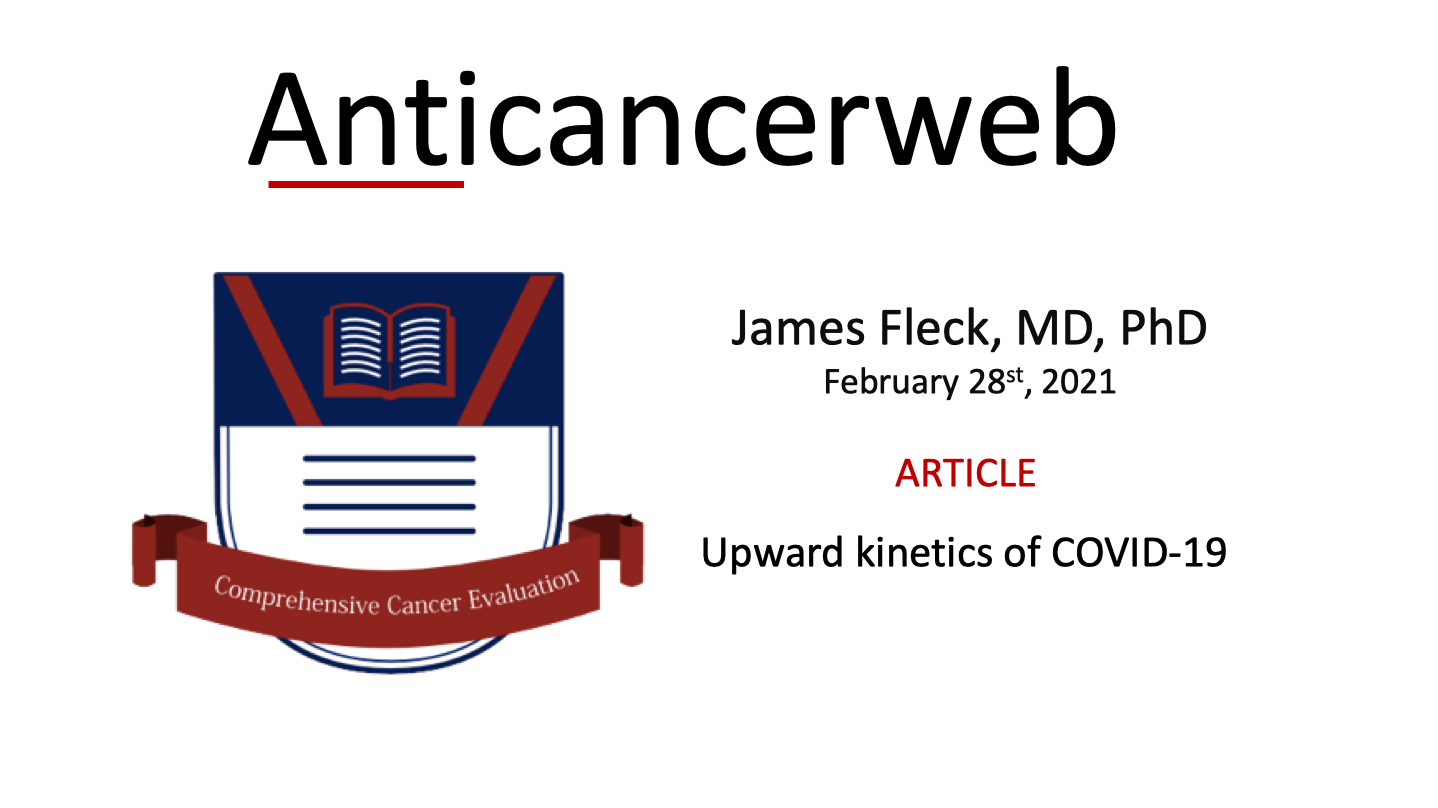
The new malignant disease
James Fleck, MD, PhD: Anticancerweb 27(02),2021
COVID-19 was first identified in Wuhan, China, in December 2019. The World Health Organization declared it a Public Health Emergency of International Concern in January 2020 and a pandemic in March 2020. Epidemiological data have been recorded daily, worldwide. Currently, a worrying 2.5 million deaths directly attributed to COVID-19 has been reached. The upward kinetics of COVID-19 can be seen in the monthly graphical representation of cumulative deaths (shown in blue) and the respective median of daily deaths (shown in orange).
These figures confirm COVID-19 as the new malignant disease. Mortality due to COVID-19 (2.5 M) is higher than the combined number of annual worldwide deaths from lung cancer + breast cancer (2.48 M), the two malignant tumors that kill the most in the world. The comparison becomes more impressive using American numbers. In USA, the crude mortality rate for COVID-19 (69.88 deaths / 100,000 inhabitants) is more than ½ the crude death rate for all types of cancer combined (158.3 deaths / 100,000 inhabitants). The relevance of COVID-19 is emphasized because it is changing the relative position of communicable diseases in the global epidemiological scenario. By adding the mortality burden caused by COVID-19 (2.5 M) with the historical mortality due to communicable diseases (7.3 M), the result is roughly equal to the total number of deaths caused by all types of cancer, annually in the world (10 M). The chart represents the relative position of the top five killers, which combined account for 44.5 million deaths (75% of all recorded deaths, worldwide).
The mortality burden of COVID-19 increased the social impact of communicable diseases, which may indicate a trend for the following years. More effort and resources must be used for research, control and treatment of communicable diseases. What has been done to face COVID-19 is not enough, as the disease continues to advance and cause permanent damage to society, with a progressive increase in the number of deaths, survivors with physical and emotional sequelae, loss of quality of life and severe damage to global mobility. After the emergence of COVID-19, society has faced the consequences of a catastrophe every day. Earlier this year, the US recorded 5463 deaths from COVID-19 in just one day (February 12, 2021), which represented almost 3x the total number of deaths from Hurricane Katrina (1,833). COVID-19 has caused nearly the same average daily deaths as World War I (20 million people died between June 28th, 1914 and November 11th, 1918). COVID-19 caused about ¼ of the average daily deaths due to World War II (75 million people died between September 1st, 1939 and September 2nd, 1945).
The reproductive number (Ro) of SARS-CoV-2 available from global evidence provides an estimate of the extent of viral transmission. Ro indicates the average number of people who will contract SARS-CoV-2 from one contaminated person. A systematic review and meta-analyses showed an estimated summary reproductive number of 2.87, however with a high grade of heterogeneity . The data point to an exponential increase of COVID-19, nowadays. The epidemiological impact is even greater, considering that an excess of deaths from other causes has also been reported. The JAMA newspaper recently reported a 20% increase in expected non-COVID-19 deaths due to disruption caused by the pandemic. The most significant increase occurred in heart disease and Alzheimer disease/dementia. The three states with the highest per capita excess death rate were New York, New Jersey and Massachusetts. It is time to interrupt this unacceptable biological process. Some countries are already reaching the expected viral reproductive number Ro <1, but this will only be effective when most countries reach that same level. In the 21st century, our planet has become a small village and therefore very susceptible to communicable diseases.
References:
1. World Health Organization: The top Ten causes of death, December 9th, 2020
2. Hannah Ritchie and Max Roser: Causes of Death, Our World in Data, December 2019
3. Global Cancer Observatory: International Agency for Research on Cancer, World Health Organization, 2020
4. Steven H. Woolf, Derek A. Chapman and Jong Hyung Lee: COVID-19 as the leading cause of death in the United States, JAMA, December 17th, 2020
5. Arif Billah, Mamun Miah and Nuruzzaman Khan: Reproductive number of coronavirus: A systematic review and meta-analysis based on global level evidence, Plos One, November 11th, 2020
6. Woolf SH, Chapman DA, Sabo RT, Weinberger DM, Hill L, Taylor DDH. Excess Deaths From COVID-19 and Other Causes, March-July 2020. JAM, 324(15):1562–1564, 2020
7. Wim Trypsteen , Jolien Van Cleemput , Willem van Snippenberg, et al: On the whereabouts of SARS-CoV-2 in the human body: A systematic review, PLOS Pathogens, October 30th, 2020

Please login to write your comment.
If you do not have an account at Anticancerweb Portal, register now.